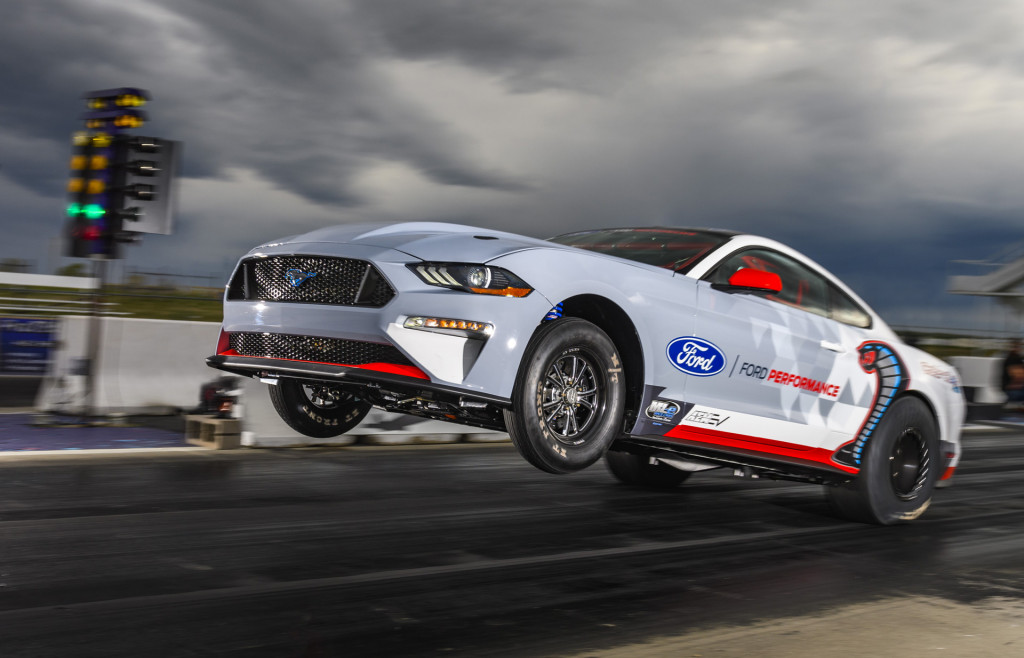The Nissan GT-R is one of the most iconic of all Japanese models. We meet Rocky, a die-hard enthusiast who has a modified Nissan GT-R family of his own, spanning across four generations of cars.
Feature taken from Fast Car Japanese. Words: Matt Bell. Photos: Jack Howells
Inspired by games like Gran Turismo and of course, the Fast and Furious franchise, the Skyline range grew from strength to strength on the popularity scale in the 2000s. Then came the R35 GT-R in 2007. Although it lost the Skyline nomenclature, it didn’t lose its ability to chew up and spit out supercars.
Japanese engineering has always been at the forefront of technological advancements and the GT-R was no different, employing a huge array of computers and electronic aids to produce a car with vast amounts of grip and ballistic performance. So, the starting block for Rocky’s love affair with Nissans was a pretty strong one.

“I’ve grown up drooling over Skylines! When the R35 GT-R was Launched in 2007, that car became my ultimate life goal.
“I bought my first GT-R (R35) in 2011. It was a very big moment in my life and a massive milestone reached! It was literally the cheapest one I could find online. I flew from London to Edinburgh to collect it and drove it back.” And here we find those famous words spoken by all car enthusiasts when they collect their new car: “I repeatedly told myself all the way back that this car ‘needs nothing!’ Well – that didn’t last very long.”
The GT-R you see here isn’t that actual car (it was sold in 2013), but after dabbling with a few others during 2013/2014, Rocky settled with the 2014 car you see here – well, the basis of what you see here…
Over the past six years, Rocky has gone from upping power to around 800bhp, then 1000bhp, before reaching 1200bhp, with the desire to clock an 8-second quarter-mile pass on street tyres and full weight. Sadly, that dream never materialised, despite clocking low 9s. The trouble with running non-drag radials with such high-powered cars is the tendency for mechanicals to break, and break they did. “Upgrading the power became like a drug,” Rocky explains.

So what do we have now? Well, the R35 is the cream of the crop. Power now sits at over 1600bhp; it’s clocked an 8.3-second quarter-mile (on drag tyres) and took the VMaxx 200 top spot with a 240mph pass over a standing mile, just 1mph slower than the Koenigsegg Agera RS.
Normally we would go into great detail about how this car was built, but we’d need a book to cover off every single upgrade – and there are three other GT-Rs we need to talk about! So, let’s focus on the biggies. Under the bonnet resides a Race Developments race engine, with race heads and a T1 Racing 4.1 stroker kit. A Boost Logic 1300x turbo kit produces the huge boost levels.

In order to put that power down, it now uses a Quaife front differential with a billet diff casing and Wavetrac rear differential. The transmission is a fully built PPG V3 gearbox with PPG V3 1-6 gearset, PPG input and output shaft, AWD gear and AWD billet shaft. The exhaust gases are amplified into the air in a cacophony of orchestral beauty via a Linney Titan Street 102mm titanium exhaust.
Now, with all that go, you need to stop. Despite chopping and changing brake setups over the past few years, Rocky settled with Boost Logic ZR1 carbon ceramics with MY17 Brembo calipers in Rose Gold with Endless race pads. Wrapped around those brakes are Volk TE37 wheels.

The beauty with this car is that while it has enough power to shift the gravitational pull of Earth, it’s also an out and out show car. Many of you will have seen it on TV, as the well-known team at Kream Developments are responsible for how the exterior looks, with a custom paint job for Rocky; they even named the paint after him, Purple Rocks! That sits on top of the TopSecret and DoLuck bodykit, which also happens to be his favourite mod. “I love the fact I have the only genuine MY17 TopSecret-kitted GT-R in the UK. Yes, the others are fake!” Oh, did we mention it also has a full audio boot build?
So, what does a man with one of the fastest GT-Rs in the UK do next? Add to his collection, of course! Hence why you see four generations of GT-R here. But why GT-Rs? “Truth be told, I get bored of cars very easily. It’s the GT-R Community that has kept me in these cars. I played a part in some respectable GT-R Clubs/Groups over the years and made some life-long friends. Me and my best friend, Buzz, went on to start our own movement for the GT-R Community that we both loved so much – GTR CARTEL.” It’s clear that GT-Rs are in Rocky’s blood.

And so to the R32, the grandad of the quartet if you will. Again, as mentioned at the beginning, Rocky likes going fast, so you didn’t expect this R32 to be stock, did you? Here is an 860bhp example, again with more parts than we have page space to talk about (you can watch us driving it here!). Under the bonnet is a Borg Warner S366 T4 turbo with twin screamer pipes and twin, side-exit exhausts. The engine features JUN pistons, HKS conrods, a JUN oil pump, and single inlet manifold, a Q45 throttle body, and an ARC intercooler.
Midnight Racing fully ported and polished the head, then added HKS 264 camshafts, Manley valve springs and various other custom parts to get it operating smoothly. The transmission is a late R33 gearbox with a Nismo 1.5-way rear diff, Nismo gearbox mount and an OS Giken triple-plate clutch.
The electronics are handled by an AEM map, fuel and oil sensor, as well as Race Technology Dash 2 and torque-split controller. The interior is definitely the most focused of the four, with a full Cusco roll-cage, a tablet to display the gauges, an OMP steering wheel and switches for high and low boost control and pump/race fuel.

The exterior is hardly under-the-radar though, with a carbon bonnet and aero catches, carbon front grille, genuine N1 rear lip spoiler and carbon R34 GT-R side extensions.
Despite being the oldest and arguably rawest of all the GT-Rs, the R32 would actually be the first car Rocky would sell if, quote, “The shit hit the fan”. That’s not to say it’s not worthy…

Next up is that moody-looking R33; the ugly duckling of the Skylines – or that’s what the internet would have you believe. This R33, again, has had the works thrown at it, featuring a RIPS RB30 engine and accompanying goodies, including race head and custom intake manifold. It uses a Garrett G35-900 turbo with an OCD Works compressor whistle, because, why the hell not? This one features an external screamer pipe loud enough to unsettle the Earth’s tectonic plates and a Kakimoto exhaust.
In order to put down that 800bhp across all four wheels there’s is a PAR Engineering-built gearbox, controlled by a Link G4+ ECU.
Although this isn’t a 400R from factory, it does feature a full, genuine, Nismo 400R kit, which is why it looks so bloody awesome! The R33 actually takes second spot on Rocky’s list of favourites thanks to its usable performance and good looks.

Now comes the model that most petrolheads dream of, the Skyline R34 GT-R – and this one is a bit special. Like the R32 and R33, it was already modified when Rocky bought it. Built by Signal Autos in Japan, it was one of the fastest GT-Rs to lap the famous Tsukuba circuit in 53.56 seconds, some 6 seconds quicker than the latest Nismo R35 GT-R…
The engine is an HKS 2.8 Step 3 stroked unit with 87mm forged pistons, H-beam rods and a full Counter 77.7 crankshaft with N1 block. All the Japanese household names come into play here, with a Tomei 280 inlet and exhaust cam, Tomei oil pump, HKS fuel pump, ARC aluminium radiator, HKS oil cooler and TRUST T78-29D turbo and exhaust manifold.
The wheels? You guessed it, Volk TE37s – just like the other GT-Rs in this stunning collection.
Electronics are controlled via an HKS FCON Vpro ECU, with HKS EVC6 boost controller and circuit attack counter, a FIELD ATTESSA over controller and a Tarzan Yamada digital G sensor.
But it’s on the inside where things get interesting, because again, like the R35, this R34 isn’t just built to go fast. It has a full, custom-quilted leather retrim in blood-red Nappa leather. Now that won’t be to everyone’s taste, but it makes this Bayside Blue beast stand out from the crowd.

When it comes to looking after this fierce foursome, Rocky entrusts them to two well-known faces in the GT-R scene – Romain from Racecal and Jurgen at JM Imports. So which car is his favourite?
“I love them all. If I was ever forced to choose just one, it would have to be my R34. I grew up dreaming of a Bayside Blue R34 GT-R in my life. The experience in this thing is like no other. Yes, it isn’t the fastest car I own, but it is the best experience. It just loves to be driven in anger. No matter what you put this car through – it just keeps going, and going, and going!”
It also happens to be the car Rocky drives the most. “The R35 doesn’t really see the light of day unless I’m going to an event to compete, or putting it on display. Sometimes having the most power isn’t the be all and end all!”
So what’s next for these cars then? “I AM DONE WITH MODIFYING, is what I keep telling myself. Who knows what the future holds? I think I am getting too old for all this stuff now – maybe it’s time to retire from big power and just relax a little.” Pfft, no chance.
And for those asking why go to all the effort, struggle and cost of building these cars only to be able to drive one at a time, Rocky has a good answer: “Looking back at my journey, I have had so much fun; winning events, breaking records etc. As expensive as it gets, I have no regrets! Life is for living.”







